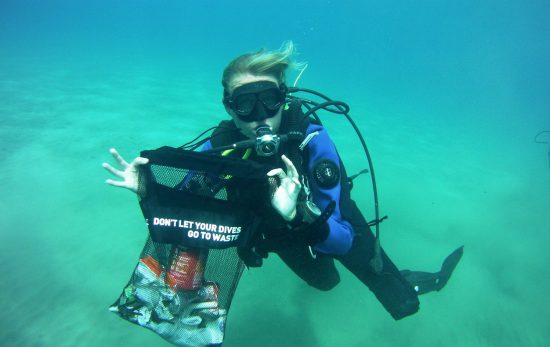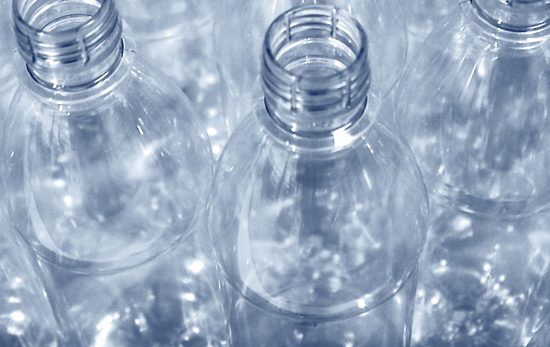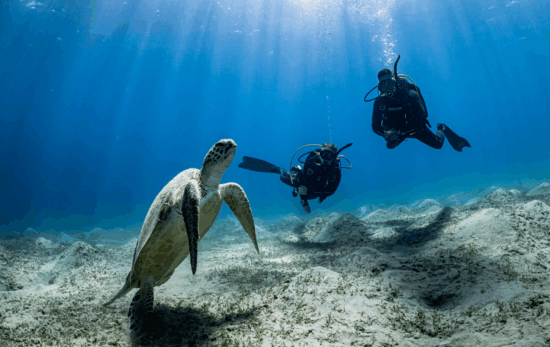Whether it’s through learning, inspiring, or taking action, there are so many amazing ways to get involved in PADI AWARE activities. Marine debris is one of the biggest issues facing the ocean, and one of the most popular ways divers are showing their love for the big blue is by joining Dive Against Debris® activities.
While most Dive Against Debris surveys focus on removing common trash items, like plastic bottles, fishing lines, and aluminum cans from the ocean environment, some divers also focus on collecting marine debris ‘treasures.’ They’re not exactly finding gold doubloons, but the items that these divers are recovering are most definitely not trash. Typically, they’re items accidentally dropped by boaters, swimmers, snorkelers, and divers. Some of the most common ‘treasures’ being found on the seafloor are snorkels, weights, cameras, phones, dive computers, and anchors.
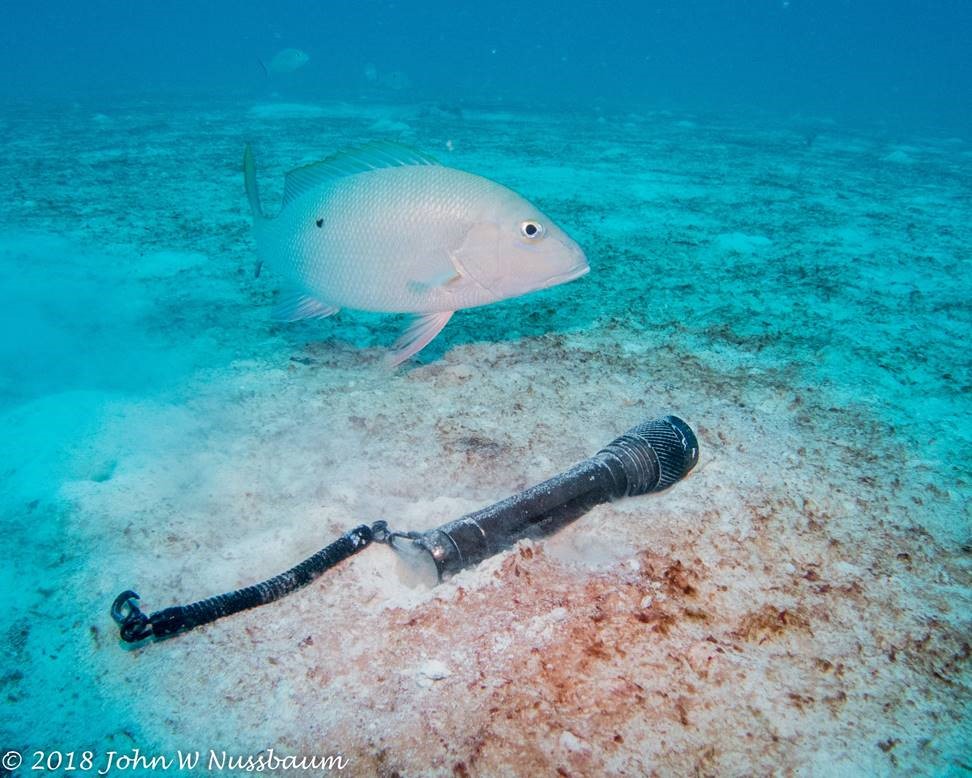
Modern Day Treasure Hunter: John Nussbaum
John Nussbaum, PADI Master Scuba Diver™ Trainer, Tec 50 Instructor, and underwater photographer based in Florida, regularly collects valuable marine debris items while scuba diving in South Florida. Some of the ‘treasures’ he recovers are simply on the seafloor right below popular dive sites, some are found just slightly off the beaten path, and some are only discovered by diving in less popular or deeper areas.
Nussbaum tells us, “On my fun dives I’ll take an underwater scooter and rebreather and look for lost dive gear. Not only is it a treasure hunt, but I quite often get to see some spectacular fish!”
The most valuable marine debris treasure that John found while diving was a USD $5,000 dive camera with lights and strobes, followed by a full scuba set (tank, BC, and regulators) valued at USD $3,000. When John recovers valuable items like these that are still in working condition, he always attempts to return them to the owner, often with great success. He recommends taking a picture of your name and contact information with any camera used around the water so that if someone like him finds it, they can easily return it to you.
Even when he finds items of lesser value, like fins, masks, weights, or dive lights, he often finds them a second home by giving them to young dive boat crew members. John’s skills are becoming more known throughout the South Florida dive community, with fellow divers sometimes telling John about a specific piece of gear they lost. He then goes out and often recovers it. He is truly a modern day treasure hunter creating positive change for the health of the ocean and the good of the diving community all at the same time!
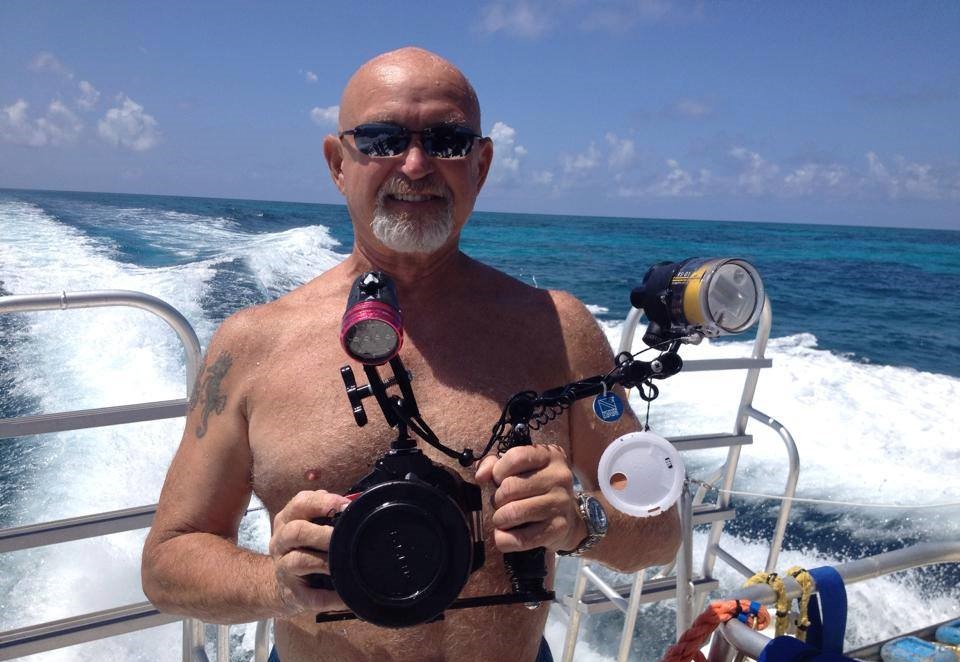
John Nussbaum found this USD $5,000 dive camera rig on the seafloor in the Florida Keys while scuba diving, and with the camera still in great condition, he was able to return the lost camera to its owner.
Underwater Treasure “Youtuber”: Jake Koehler
Another notable diver collecting marine debris treasures is Jake ‘DALLMYD‘ Koehler. Scuba diving and freediving mostly in freshwater rivers, lakes, and springs in the southeastern United States, Jake finds an abundance of ‘treasures’, like smartphones, cameras, and jewelry hidden beneath the surface of the water. His enthusiastic underwater treasure-hunting videos have brought an audience of more than 13 million subscribers to his channel on YouTube. And on almost every dive, Jake also fills a cleanup bag with trash found between the treasures. Check out one of his videos below.
Marine Life Rescuer: Kayla Feairheller
Not all underwater treasures are just objects to be reclaimed or recycled. Some divers are motivated by a deep desire to preserve not only beautiful but also healthy seas and their inhabitants. Recently, on a Dive Against Debris mission Kayla Feairheller made an unexpected find – a discarded coffee maker that had trapped a young octopus. Feariheller says, “[The octopus] was close to being crushed by a coffee maker, and we had to act fast. We gently extracted her from under the debris and brought her to the sea in a bucket, where I lifted her beautiful little body out and placed it back into the sea. The waves pulled her backward, and we watched her make her way back home, safe and sound.”
She freed the octopus, turning litter into a life-saving act and showing how divers can make a big impact. For any diver, this moment is a great treasure. Removing debris cleans the water, saves lives, protects habitats, and keeps the underwater world thriving for future generations.
Whether you set out on your next Dive Against Debris to collect trash, like single-use plastics and abandoned fishing gear, or choose to search for ‘treasures’ like lost dive gear, the ocean will thank you for helping make it a cleaner and healthier place. Earning the PADI AWARE Dive Against Debris Specialty and the PADI Search and Recovery Diver certifications are great ways to obtain the proper training for such activities.
Participating in Dive Against Debris and other conservation events is a fantastic way to give back to our oceans while enjoying the thrill of finding treasures of all kinds. Every piece of debris removed helps to protect marine life and preserve the beauty of our oceans. Get involved today and check the PADI Conservation Activities Locator for an upcoming event near you.

